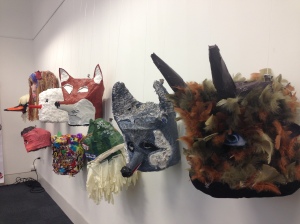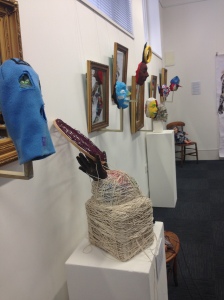Kids Company
Our Many Faces Exhibition at the RWA
We grow up acquiring a range of personalities to enable us to adapt and survive the different environments and situations we are in. ‘Our Many Faces’ discuss the different masks that individuals use when dealing with the outside world. We work with the notion that we all wear masks, all the time, some habitually, some self-consciously.
‘Our Many Faces’ is an exhibition of artwork and sculpture created by children and young people from Kids Company, in collaboration with The Royal West of England Academy (RWA) courageously exploring the positive and negative aspects of the self, the different masks we wear and what’s behind the mask once its lifted. The children bravely demonstrate the choices and power we can gain of having the self-awareness of these different personalities we all have and the different environments we choose to bring them out to play in.
The partnership between the RWA and Kids Company is based on the belief that the practice of art in the context of compassionate human relationships can be life changing for vulnerable children. The staff at Kids Company are therapeutically trained and support children through potential trauma recovery. The staff and volunteers at the RWA have brought their artistic experience to the project and share a commitment to enrich and transform children’s lives.
This exhibition celebrates the astounding ability of children and young people to create art from adversity.
Sub-personalities
Most people consider their personality as fixed and unchanging; in Psychotherapy there is an understanding that we can operate out of different parts of ourselves. These parts (or ‘sub-personalities’), which can come from the different roles we assume in life or from ways we have learned to behave in different situations, can behave and think in very different ways from one another.
Just think about the part of you who is a ‘Lover’ and the part that is ‘The Good Parent’: each has its own way of behaving, thinking, and being in the world. If you let the Good Parent sub-personality choose your summer holiday, you might end up having a week in Disneyland, while the Lover sub-personality would prefer a romantic weekend in Paris!
The more we look, the more sub-personalities we can find, and we discover some of them have very different motives, needs and ideas about how your life should be run! This can cause internal conflict, which can make life very difficult, especially if you get identified with a particular part. Understanding the different parts of ourselves enables us to stand back and become conscious of how these different parts operate. This can be very empowering and give you back conscious control of internal dynamics, which can be so tricky and confusing if you are not aware of them!
Once you become aware of how these parts operate you can stand back and get an objective view of reality and choose which part to give your attention to. Some of your subpersonalities may have been formed in childhood and are way past their ‘sell by date’ and could do with a review or a bit of transformative work. The ‘Stroppy adolescent’ sub personality might have been very helpful in helping you formulate your own ideas and break away from your family, but its behavior in your current life might be unconsciously destructive in relationships at work.
One subpersonality we all have to deal with is the Internal Critic, which can be extremely judgemental of others and hugely critical of ourselves, undermining our best efforts, berating us for ‘mistakes’ and sapping self confidence and esteem. At the root of every sub personality is a quality, the Internal Critic might ‘bring out the best in us ’or help us to discern what is useful in what is offered by others. When its negative or cynical thinking gets out of hand however, it is important to become conscious of it and evaluate its contribution to our lives. Recognising and accepting, or transforming these parts gives us more control and choice in how we live our lives.
True Self and False Self
In early childhood, if something authentic (e.g. an essential quality or our true-Self) is not acknowledged and mirrored back to us by our parents, we presume it is unimportant so we repress it and develop ego structures that will help us cope without it.
True self and false self are terms introduced into psychoanalysis by D. W. Winnicott in 1960. Winnicott used the term “True Self” to describe a sense of self based on spontaneous authentic experience, a sense of “all-out personal aliveness” or “feeling real”.
The “False Self” was, for Winnicott, a defense designed to protect the True Self by hiding it. He thought that in health, a False Self was what allowed a person to present a “polite and mannered attitude” in public but he saw more serious emotional problems in patients who seemed unable to feel spontaneous, alive or real to themselves in any part of their lives, yet managed to put on a successful “show of being real”. Such patients suffered inwardly from a sense of being empty, dead or “phoney”.





I think it would be good if a name was attached to the thoughts and opinions expressed in this essay. Who is the author?